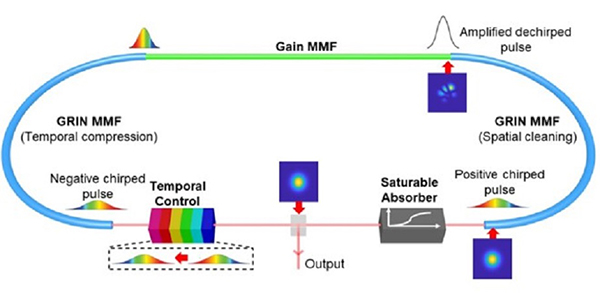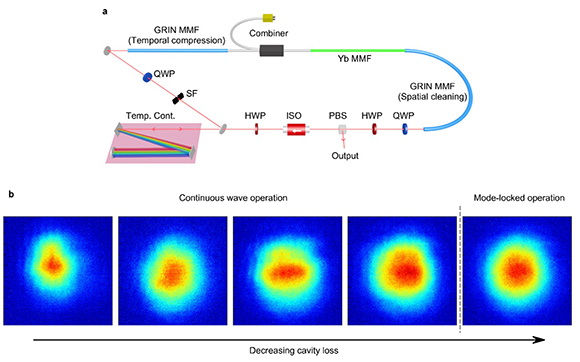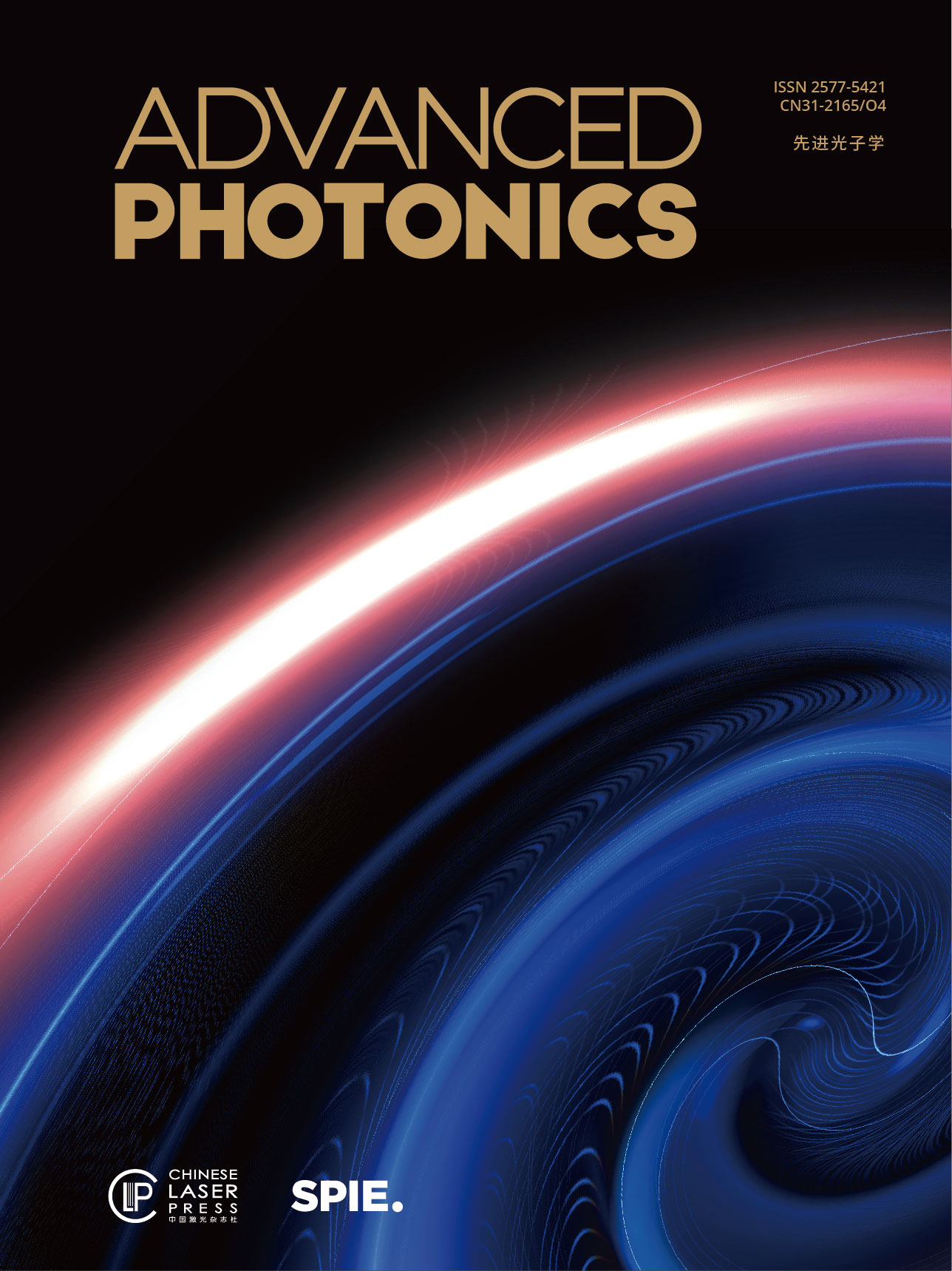
Conceptual outline of dispersion-managed cavity design, from Te?in et al., doi 10.1117/1.AP.2.5.056005
In the last few decades, only temporal modes have been considered for mode-locked fiber lasers using single-mode fibers. Mode-locked single-mode fiber lasers offer advantages due to their high-gain doping, intrinsically single-spatial mode, and compact setups. However, in terms of power levels, mode-locked fiber lasers suffer from high nonlinearity, which is introduced by the small core size of the single-mode fibers. Researchers from École Polytechnique Fédérale de Lausanne, Switzerland (EPFL) recently developed a new approach for generating high-energy, ultrashort pulses with single-mode beam quality: nonlinear beam cleaning in a multimode laser cavity.
Spatiotemporal mode-locking
The traditional approach to overcome the power level problem is to first generate low-power ultrashort pulses (so-called laser oscillators), which is then followed by a cascade of amplifiers to increase the power levels. But external amplification increases cost and complexity.
Recently, multimode fibers, particularly graded-index multimode fibers, have attracted attention due to their low modal dispersion and periodic self-focusing of the light inside. Spatial beam cleaning, wavelength conversion, and spatiotemporal mode-locking have been demonstrated with graded-index multimode fibers.
Spatiotemporal mode-locking is a newer approach to generating ultrashort pulses. It creates a balance between spatial and temporal effects within a multimode laser cavity, which supports multiple paths to guide light. The large multimode core diameter of the fiber decreases the nonlinearity of the cavity and allows the system to reach high pulse energies without external amplification. However, due to its multimode nature, high power spatiotemporally mode-locked lasers suffer from a low-quality output beam.

Schematic of the laser cavity and beam profile measurements. (a) QWP, quarter-wave plate; HWP, half-wave plate; PBS, polarizing beam splitter; ISO, isolator; SF, spatial filter. (b) Evolution of near-field output beam profile for decreasing cavity loss from continuous wave to mode-locked operation for 8 nJ output pulse energy.
Single-mode beam quality via nonlinear beam cleaning
EPFL researchers demonstrated nonlinear beam cleaning in a multimode laser cavity—a first ever demonstration—which enables generation of high-energy, ultrashort pulses with single-mode beam quality. Their report, published in the peer-reviewed, open access journal Advanced Photonics, shows that engineered intracavity temporal pulse properties enable a route to generate a high-quality beam when mode-locking is achieved.
Their design allows the generation of sub-100 femtosecond pulses with high pulse energy (>20 nJ) and beam quality of M2 value (less than 1.13 without external amplification) in a compact and low-cost form. The team investigated the complex cavity dynamics by mode-resolved simulations and confirmed nonlinear beam cleaning numerically and experimentally.
Lead author Ugur Tegin notes that his team's work presents a new way to harness and control spatiotemporal nonlinear dynamics for ultrashort pulse generation. The results of this research show that good beam quality, high pulse energy, and sub-100 fs pulse duration from a fiber laser can be constructed with commercially available and standard components. The reported method can be extended to fibers with a larger core size for further power scaling while preserving the beam quality of sub-100 fs pulses.
Read the original research article: Ugur Tegin et al., "Single mode output by controlling the spatiotemporal nonlinearities in mode-locked femtosecond multimode fiber lasers," Adv. Photon. 2(5), 056005 (2020), doi 10.1117/1.AP.2.5.056005


